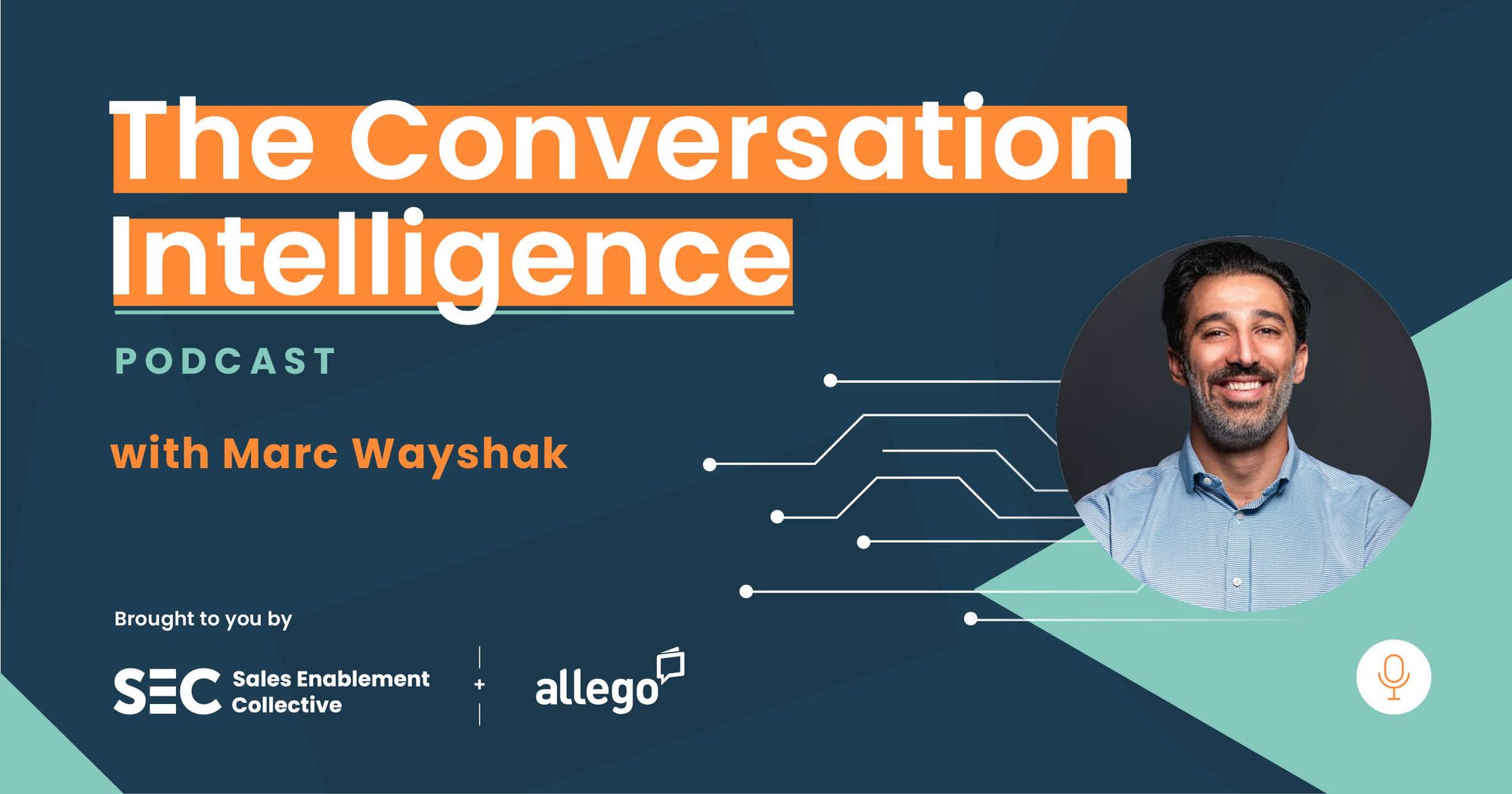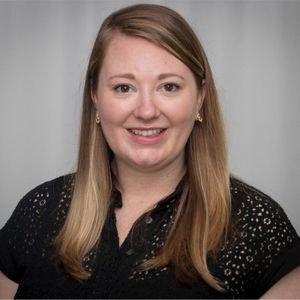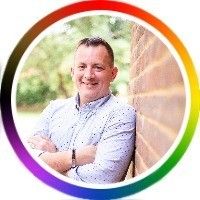This fireside chat, led by Sarah Fricke (AVP Global Revenue Enablement, RingCentral) and Will Matthews (Director - Sales Operations & Enablement, Syniti), is originally from our awesome Future of Sales Festival in December 2022.
Catch the replay of this chat - and dozens of others from SEC events - on the membership dashboard, exclusively for SEC members.
In this fireside chat, Sarah and Will discuss:
- How to deal with the current challenges in sales enablement
- Applying frameworks to changing behaviors
- Key techniques to motivate your sales teams
- How to overcome language barriers in sales
Learn from their expertise right here. 👇
Dealing with current challenges in sales enablement
Will
It’s great to be talking about this broad topic of changing attitudes and behaviors - it's a very interesting topic particularly in the digital and post-COVID world, where a lot of our behaviors and skill sets are being challenged on a fairly regular basis.
In the midst of Q4, most of us are constantly trying to keep on top of many changing priorities, challenges, and different ways of working.
My background is in learning and development in sales, and the combination of these two things from an enablement point of view is challenged more at this time of year (Q4) than at any other time.
I think that looking at it from a behavioral point of view and an attitudinal perspective is always interesting.
This isn’t necessarily about what we sell, we all sell different things.
But there’s certainly some commonality around the things that we need to think about when it comes to competencies and skills.
Sarah
Absolutely, Will. I get excited to talk about this because I think that's a really big part of what we do in enablement. I actually look at it as a core pillar, owning the culture of our organizations.
A big part of culture is how behaviors change and what skills you need, but also what behaviors have to change in order to let those skills really shine.
At RingCentral, I have the opportunity to lead a phenomenal enablement team that’s always thinking about the fact that it's not about the product that's launching, or the process that we're rolling out - it’s about the why - why are we as a team doing this? .
I’ve had the benefit of being in the shoes of a salesperson earlier in my career, and I think that's really important too.
Whether it's sales, CS, or professional services that you're enabling, you have to be able to put yourself in their shoes.
If you haven't done that role before, go sit side by side with them on the floor and understand the behaviors that they do.
For example - why don't they like putting notes in Salesforce? We think we know the answer to that, but that doesn't necessarily mean we should assume.
You should always ask the question.

Behaviors are one of those really tricky parts of enablement. But when you crack that code, you become so much more successful, because you're not breaking down walls and you're not forcing people on leaderboards.
You're actually getting them to learn in the way that they want to learn based on the behaviors that they know make things successful.
Will
I couldn't agree more, Sarah.
I don't know whether other people in sales excellence or enablement roles think the same way, but I believe that part of our challenge is to try and help reduce the amount of excuses or blockages there are for reps to perform well.
They are going to face complexities and challenges, and I think our job in sales ops and sales enablement roles is to try and remove those blockers.
Applying frameworks to changing behaviors
Will
There's always going to be a knowledge challenge.
People need to know more, whether that's about the product, the process, the customer, or the industry.
Can they get that knowledge?
There’s resistance in putting that information into the single record of truth that we call our CRM systems. Whether you're on Salesforce or Dynamics, putting that knowledge in and sharing that is something that's a challenge.
But equally, just to keep the idea going, knowledge then leads to skill.
Skills and competencies - writing down what we expect, what's good, what's not so good, and debating those capabilities, and how we observe that being carried out in the field is a constant challenge from a purist, learning and development point of view - are we seeing skills being applied well?

This is augmented by a couple of other things.
Attitude, in particular, is based on, “how do I approach and how do I choose to show up?”, and that's the most variable thing in the whole model.
Today my attitude could be quite negative, and tomorrow it could be quite positive. However, today happens to be when I need to close the sale, and tomorrow is when I'm on holiday.
Some of that is solved for us through habits, the regular way of approving things, and the regular way of reviewing and practicing things.
Now, if you unpick that structure, it's KASH.
- Knowledge
- Attitude
- Skills
- Habits.
So if you remember nothing else from this article, remember these, as they become the things in the framework that all enablement can be done to.
- Do we know?
- How do we show up?
- Are we good and displaying skills?
- And habitually, are we repeating success?
That's really the key thing, and that's only varied then by the roles that we ask our reps to do.
Sarah
I like the idea that we all need a framework, and KASH is a really good one.
There are tons of ways to formulate it, but at the end of the day, it's about how you think about that knowledge or behavior and get it to a specific role and function.
In my role, I actually span from our entry-level roles, from BDRs and SDRS through to AEs, our solutions engineering team, to CSM professional services. And that means a lot of different roles doing a lot of different things at the organization.
So how do we really think about what that particular role needs at that point in time?
‘At that point in time’ is a really critical part because ultimately, everything that you bring, they probably want to know if they can consume it, understand it, and put it into action right then.
Without putting it into action, changing that attitude, or practicing that skill, what happens is that it becomes a great thing on paper that they walk away from, instead of truly understanding how that could be embedded into who they are and how they do their jobs.

So as you think about doing this, it's important to sit side-by-side with the person that you're enabling and understand (at least from the top performers) what makes them successful.
There's a lot of work being done in enablement right now around role profiles - it used to be that old HR, L&D type of role, and we dismissed it when enablement really became an industry, but it's coming back around like all good things do, which is how we act as strategic advisors to our leadership within enablement and explain what good looks like.
They don't necessarily have time to be with every one of their top performers and know that.
It could be across 20 different managers on their team. So we have this unique perspective to be able to look across all top performers, distill that information, create the profile, and advise our senior leadership.
And that's where behaviors really start to change, when you really know the role and the function that you're enabling. That's why I believe it's so critical that we build out our teams to have a specific ratio.
Think about it - if it's one of us to 1,000 reps - what I just described isn’t possible.
So a lot of people bring on their first enablement leader, and they say, “Okay, you're off to the races, see what you can do.”
And it's our job to break it down and ask, “What role am I focused on first?”
I‘d love to help everybody, but the way that enablement works is when I have that one-to-one (ish) relationship, one to 50, one to 60, one to 70, I can create an impact in the org.
If I don't have that I'll never get to be role-specific, which means I can never implement this process, methodology, and thought process behind what I want to do.

Will
There's a perspective here as well to Sarah’s point around bringing back some of what you’d classify as old-school enablement, role profiles, and competency models and skills.
Observationally, with the last few companies and customers I've worked with, setting expectations, writing them down, and being clear about what good looks like is something that's really important.
Particularly if we're doing more at distance, where we’re more digitally connected, it's critical that we set some clarity around it and write down:
“To do this job well, you need to be doing this, this and this, following this process, and maintaining this system.”
Then it allows management, sales ops, and enablement people to be consistent with their feedback.
For example, if me and a colleague are both in the same role, and I get one type of feedback, and you get another type of feedback, it's very difficult to align as to whether both of us are high performing or not.
Set the role definition with clear expectations alongside our sales ops friends, and by using the data that backs those expectations up - such as trends, win rates, and average deal value.
When you become a data-driven, performance-managed business, you go a long way.
Key techniques to motivate your sales team
Sarah
Oftentimes, as we think about changing behaviors, we're thinking, Oh, that's sales leadership and enablement, and not necessarily including the operational side of things, where people change a lot of behaviors when you give them stats of what works well.
We can say, “If you have 20% or more of this product in your overall sales, you hit the top of our leaderboards.” That means a lot.
We're talking to salespeople who are financially driven individuals for the most part, and with that comes a desire to be at the top.
So those numbers are really the basis of things.
Just like they're creating contracts, we're creating almost an ROI with them of why do what we want you to do?
Will
It comes back to this attitudinal piece, what motivates some communities and what doesn't.
Gamification, leaderboards, and things like that work for certain roles and certain companies.
For other organizations that may have longer sales cycles and larger deal value as opposed to larger volumes, leaderboards don't vary or change enough, so that's not typically a motivational characteristic.
So pick some of the inspection techniques, practice techniques and the ‘get ready’ techniques that tend to vary by deal value, length of sale, competitive landscape, and industry dynamics.
You don't get away with just a single, one-trick-pony approach to life, you have to be able to flex and vary your enablement technique and approach for all of those combinations. Every industry, company, role, or person has to be varied.

Sarah
I completely agree with Will.
You have to break down the metrics because you can't compare someone who's got a million-dollar TCV versus someone who's got a 50k ARR.
But on the flip side of things, what you can do is show them what it takes to be successful in each segment.
We've seen a lot more folks that are actually moving between our segments and progressing within the organization by now having it defined as to what good looks like and how to get there.
Their behaviors have changed significantly just by telling them what it takes.
I think a lot of folks have previously said, “Oh, well, HR didn't give me a very specific development plan.”
Well, now we're in this new world where you can define the landscape and allow people to create their own journey within it.
Will
I remember when sales enablement was a new title and it was a different way of describing a learning framework or training program. And over the last 10 to 15 years, the title has been used in anger by us as a community, and misused by some of our sales colleagues.
It's now matured significantly to become much more of a business-focused profession.
From a sales enablement purist’s point of view, - if you don't know some of the dynamics of your business in regards to how long it takes to close a deal, how long it takes to qualify an opportunity, how fast or how slow we move - you can't use that to drive the behavioral or habitual change that you need.
You have to be a bit more financially and business savvy about what's happening.
Otherwise, you can't challenge, validate, and verify with the reps through coaching or training interventions whether things are improving or not. So it’s becoming much more of a profession, I think.
Sarah
I completely agree. There are two things I often get from a lot of folks I mentor.
One thing they say is:
“I get it, but I'm not a finance major or a sales leader. I don't know what we should measure. What are the leaders measuring that you're supporting?”
It’s very simple. What dashboards do you look at every morning?
That gives you an understanding of how they're running their business and that's a good place for you to then start looking at things like:
“Okay, they're measuring sales cycles. Great. I'm going to run an enablement program of what the best practices are across the sales cycle. Then I'm going to measure it from this point in time to that point in time.”
We've taken it so far that all of our leaders present a scorecard on their business, where they're presenting their forecasts, their call, and projected pipelines for the next quarter.
For example, they might say:
“Here are the five enablement programs that we're focused on, here's how we're measuring them, here's the baseline where we're starting, and here's the projected end goal.
"So I believe we're going to drive an incremental X amount of revenue to the business on top of the calls that you just made.”
And that's what's changed from just being a training to being a very important organization. You have to get your people ready, but also be a business and have a seat at the table.

How to overcome language barriers in sales
Will
When it comes to language barriers, this is where data, numbers, and information become your friends.
The one true transferable language is numeric around the world. One means one everywhere, two means two everywhere.
So if you’re data-driven and you're saying, “If we're one today and we want to be two tomorrow, how do we make that happen?” Your local support to translate that then becomes a much more straightforward thing.
If you walk in and ask, “What do you want to be?”, that’s much more language restrained. You need some sort of local translation support, but you need to make it more structural in that sense.
But also, it's not just language. I think culturally, what words we use to mean something in the western world are different than in the eastern world.
There are some great tools out there. There's a brilliant product around preferences or engagement styles called Insights. If you've done Myers Briggs, there are similar things out there.
But it takes the language, takes the French to German, to Malaysian, to English issues out of the world.
It gives you comparisons of similar words that mean a certain thing. You’ve just got to find the tools that help you.
But my view is to put the numbers into the mix.

Sarah
Numbers are definitely a universal language. The second thing I'd say is to use your people.
There's got to be someone within that office or within that location that speaks the same language you do. Use them to amplify your message across the team.
We do something called a Team Lead program, where we create a team lead within our French office, as an example.
But before that, we did struggle with language across our French team.
We identified one person on the team that had great English skills. I would prep her and enable her to then enable the broader team.
And that helped us in getting to a place where we created a business case of why we needed an enabler that spoke that language and how important that was as a strategic bet for our business.
So I will say use the team around you.
I’m positive that if you're able to give them your message, they'll help you in getting it there. There are also tons of tools and LMS that will convert in language, at least from a subtitle perspective, that helps gets you there.
I get this a lot because I'm in the US, but a lot of times I’ll hear, “Oh, that's what the US is doing. That's not what we're doing here.”
So we were able to bridge the gap by making smaller steps. We couldn't necessarily translate the whole video, but we could do subtitles.
Or we could at least have a one-pager guide that was in a language that showed that we were working together on getting to the next step.
Consider having focus groups on where they believe their gaps are too. The more you can do on the ground the better.
I did a lot of work at 8pm Eastern time with my team in Australia, and early in the morning with the team in France when I first started because you have to talk to them no matter where you are in the world.

Will
The other thing I'd add to that is that I think the world is made up of triangular relationships.
Sales, enablement, and HR live in the same world here.
Look at the talent development programs in your company. Look at how high potential is spotted.
Look at who needs to have a stretch development assignment provided for them to be more broadly or more generally developed in the business, and ask them to become the champion through enablement within the regional country that they’re in.
I think if you hook that up and it becomes part of an ongoing talent development, constant improvement, and developing mindset within the company culture of learning, then your HR colleagues are more likely to support that and join in from a purist learning and development point of view.
But also, people will now feel that their potential has been recognized.
It's not just about performance, their potential has been recommended to help enable things more effectively.
Sarah
And don't think about just sales or management, you could also use cross-functional roles.
Hopefully, someone speaks a common language. Otherwise, that might be something you need to raise to your leadership team as a challenge point.
And that’s when you hire someone locally, or maybe even an enablement consultant that speaks the language at hand.
I don't think we can do enablement without thinking about the behaviors of our team.
The way we get to a true world-class revenue organization as well as enablement organization is by understanding the language that our team speaks.
For example, if it’s Czech, even if you literally learn the words for ‘hello’ and ‘goodbye,’ and, ‘what can I help you with?’ in that language to show that you're making progress, that's how we get to the next level.
Really focus on the behaviors first, the ‘why’ statement. And that ultimately translates into, ‘What is the change we're asking them to do?’
Will
Again, I'm going to refer back to data. Your managers and your sales leaders are driven by what's happening against their forecasts and against their performance.
If you can speak that language in the sense of what we need to improve, whether that be planning, closing skills, negotiation skills, development of opportunities, or qualification.
If you can speak the language and say, “If we spend more time on this, performance will improve. Can we correlate the behavior of our sales teams with the performance of our sales teams?”
Your sales leaders, whether they believe it or not, will support it because it shows.
There was some great research done a few years ago by Challenger, where they showed that coaching interventions for the mid-performer on one specific skill behavior issue resulted in a 19% improvement in quota.
They spent time working out what the one thing that would make the difference for this year would be, and they saw a massive uptick.
Any sales leader who says they don't want up to 19% improvement in their quota is lying. So they will pay attention to it.
To get the hook, there needs to be something in it for everybod:
- For sales leadership, it’s less challenge around their forecast.
- For sales professionals, it’s being more likely to hit quota.
- For finance, it’s gaining a more consistent view of business performance.
- For customers, it’s better solutions being proposed with higher value.
You have to be able to tell the enablement story from a number of different perspectives. But start with data.
I used to work for a sales ops leader and he was a West Point graduate, and his comment was, “In God we trust. Everyone else brings data.”
Thanks for reading - we hope you found Will and Sarah’s conversation insightful!
Catch the replay of this chat - and dozens of others from SEC events - on the membership dashboard, exclusively for SEC members.





